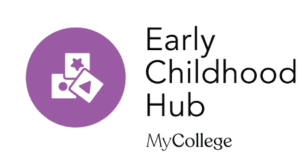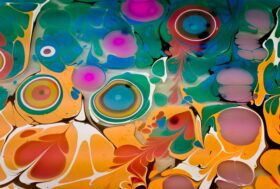Understanding the World: A case study

Emma Lennard, Primary Curriculum Advisor, Knowledge Schools Trust, UK
The Knowledge Schools Trust opened our first primary school in 2013 with a cohort of 60 Reception children. Now, nearly 10 years later, we have four primary schools within our trust and are growing. This case study will outline our approach to curriculum design and pedagogy in our Early Years, focusing upon the area ‘Understanding the World’.
Our Early Years curriculum values and sequences powerful knowledge (Burns, 2018) in a meaningful way. This supports children to learn more and remember more over time. We have thought carefully about what we want our children to learn and then we have thought about how we can order, or sequence, that content so that learning can build. Rather than jumping from disconnected topics, each part of our curriculum fits into a bigger picture of understanding. This is true for our Early Years curriculum for ‘Understanding the World’ (UtW), and for Key Stage 1 and Key Stage 2. We have thought carefully about how our curriculum can teach powerful knowledge while nurturing our youngest children’s own interests and passions. We want to teach our children in Early Years about the world around them and we want to listen to what they have to say; their voices matter.
Our curriculum content
We have shaped our curriculum content with an end point in mind – the early learning goals for Understanding the World:
- People, culture and communities
- Past and present
- The natural world.
These goals are not a curriculum themselves, but we thought carefully about how the curriculum that we designed would support children to meet these goals at the end of Reception. We also considered the content of the Key Stage 1 and 2 curriculums and thought about what foundational knowledge would equip our children for success later in their primary education. When we were selecting content for our curriculum, we thought about transition from Early Years to Key Stage 1 and how the subjects found in the National Curriculum have their conception within our Early Years curriculum. We found that subject leaders are often based in Key Stage 1 or 2 and can lack understanding of how their subjects manifest within Early Years. For example, children don’t start learning science in Year 1; important foundational understanding begins in the Early Years.
Example 1: This example shows how children have a minimum of five opportunities to learn about space within our curriculum.
The content in EYFS links to Understanding the World (‘Past and present’ and ‘The natural world’). Within each unit, they revisit prior knowledge and build on it, adding to their schemas. This is how we have planned for children to learn more and remember more over time.
Nursery: Heroes and adventurers, Valentina Tereshkova (Russian cosmonaut)
Reception: Space
Year 2: Astronomy (science – additional to National Curriculum content)
Year 5: Astronomy
Year 6: The Space Race (part of the Cold War unit in history)
Example 2: How is the natural world woven through your curriculum?
Within Example 2, it is important for our Early Years leader and for our science subject leader to understand how and why the curriculum has been designed and how knowledge builds over time, starting in our nursery with our youngest children. Teachers who know the curriculum well can have the highest of ambitions for their children, as they know what has been taught before and can build on that. The Natural World ELG prepares children well for Key Stage 1 and 2 science, and we have woven opportunities to look closely, notice patterns, observe change, test ideas and develop understanding throughout our Early Years planning for Understanding the World. We can track what we expect children to know about – for example, ‘animals’ – through the curriculum to ensure that the content we have chosen is ambitious and progressing over time.
You can see here how the ‘natural world’ ELG translates into Key Stage 1 and 2. At every stage of their journey through the curriculum, children are learning about the natural world. We can be really clear about what they are learning, how it is progressing and what we would expect them to be able to tell us.
Nursery: Growing and changing
Reception: Growing and changing
Year 1: Human body, animals and plants
Year 2: Human body, living things in their environment, plants
Year 3: Human body, cycles in nature, plants
Year 4: Human body, classification of plants and animals
Year 5: Human body, living things
Year 6: Human body, classification of living things, reproduction, evolution
When we designed the curriculum for Understanding the World, we thought about what a journey through the curriculum would be like for our children in Early Years. Who would they meet? What places would they visit? What would they look closely at? What stories would they hear?
We made a choice to introduce our children to the stories of heroes and adventurers, including explorers Ernest Shackleton (who ventured to Antarctica), Sir Edmund Hillary and Tenzing Norgay (who climbed Mount Everest), the education campaigner Malala Yousafzai and, as mentioned in Example 1, the cosmonaut Valentina Tereshkova, among others. Each person that we chose to include in our curriculum contributes something to our curriculum story. Later in Key Stage 1 and 2, children will be introduced to many more interesting people, including Lewis Latimer (inventor of the carbon filament that enabled a lightbulb to last longer than minutes), Sir David Attenborough (biologist, broadcaster and natural historian), Ibn Battuta (medieval Muslim explorer), Mary Anning (palaeontologist) and over a hundred more people, some well-known and some whose voices need to be heard or whose stories need to be told.
Example 3: Whom do your children meet as they journey through your curriculum?
This example shows how children have three planned opportunities to learn about the education campaigner Malala Yousafzai. The content in EYFS links to Understanding the World (‘Past and present’ and ‘People, culture and communities’). When children study Malala’s Magic Pencil in Year 2, they will already know about her life and work campaigning for access to education for all children. Big concepts that will be returned to include equality, discrimination, power and justice. What pupils understand and can say about these concepts will develop over time as they journey through the curriculum.
Nursery: Heroes and adventurers, Malala Yousafzai (education campaigner)
Year 2: History, powerful voices, Malala Yousafzai
Year 2: English; Malala’s Magic Pencil
Year 5: History of human rights and equality
Within our curriculum, we embrace the powerful medium of storytelling. We introduce our Reception children to the past though stories such as legends, fables and Ancient Greek myths. They will hear these stories again in Key Stage 1 and 2, where they will be able to reconnect to their memories of the stories and learn more. For us, stories help to bring the world into the classroom. The rich language experienced in stories helps children to widen their vocabularies and learn words that are far beyond everyday spoken language.
Our approach
Next we will describe our pedagogical approach to a knowledge-rich Early Years curriculum and how our teachers develop vocabulary and conceptual understanding through play, providing children with the words and knowledge that they need to understand the world around them.
Our approach to Understanding the World values knowledge and places children at the heart of our teaching. While we plan our curriculum thoroughly, specifying and sequencing the knowledge, we build in flexibility to enable schools to teach a meaningful and locally connected curriculum that captures the uniqueness of their school context. We plan five weeks of taught content within each unit, allowing flexibility within a six- or seven-week term. If children respond particularly well to content, or if they need longer to explore it further, teachers can do that. If teachers want to add content to the unit – for example, a trip to a locally relevant historical site, museum, nature reserve or religious building – there is scope to do that. It is important to create balance so that the planning does not become a straitjacket, but that it supports teachers and children to succeed.
Play is the foundation of learning for young children. Valuing knowledge in the Early Years does not prevent play; it encourages it. Our plans suggest playful activities, but teachers are free to provide creative, play-based opportunities for learning for the children they know well. The knowledge fuels children’s vocabularies and imagination. From junk modelling to role play, construction to painting, digging in the ground to moving to music, our children are moving, exploring, observing, creating. We suggest that the content we have carefully identified is taught in short sessions, including adult-led and teacher-led. Within the different settings in our trust, it may be appropriate for this to be a whole-class taught session, but in others the taught session can be a small group. We identify supporting activities and suggestions for play that are designed to provide ideas that can enhance the learning environment and offer extended opportunities for children to revisit, reflect and apply their learning within ‘Understanding the World.
Each week, over the five planned weeks of content for Understanding the World, we have two teacher-led sessions, two closely linked adult-led activities and a range of suggestions for independent activities, including ideas for continuous provision. We have found it most effective for teachers to start the sessions by reconnecting to prior learning, reminding children that what they already know will help them today. In our experience, this empowers children and helps them to develop into confident learners. Teachers then explicitly teach some carefully selected, ambitious vocabulary, before teaching the core content of the session. The length of the teacher-or adult-led sessions very much depends on what point of the Foundation Stage children are at and their individual needs. We use child-friendly knowledge organisers to help children to remember core content and to communicate what children are learning about with parents (see Figure 1). The knowledge organisers have key words and key images to prompt children’s memories and help them to remember the most important content from each unit. We don’t expect children to read every word on the knowledge organiser – they are not designed for that – but we want children to pick them up and be able to talk about them, to notice pictures and know something about those pictures. The definitions of key vocabulary are there for parents and teachers to be consistent with their explanations. We’ve found that children really enjoy having the knowledge organisers as a tool and are always proud to talk about what they know.

Our plans are a stepping stone to success, but they are simply pieces of paper without the skills and passions of the teachers who translate them into learning. Every Early Years setting is different – the books, the resources, the outdoor space, the access to local areas. So, through our CPD, we highlight how to ensure fidelity to the core curriculum content, maintaining the integrity of the curriculum, while recognising where and how adjustments can be made to ensure that the curriculum is responsive to the needs of the children.
The children that we teach have a right to access powerful knowledge. We want them to have a lot to say because they have thought about many things, to have lots of opinions because they have considered many viewpoints, to be able to connect to people and places around the world because they know something about them. Within the Early Years, Understanding the World is uniquely placed to offer opportunities for children to discover and engage with the wider world and all the wonder that it holds.
You can find out more about our approach to Early Years here: www.primaryknowledgecurriculum.org
References
- Burns R (2018) Applying the ‘powerful knowledge’ principle to curriculum development in disadvantaged contexts . Impact 4. Available at: https://my.chartered.college/impact_article/applying - the - powerful - knowledge - principle - to - curriculum - development - in - disadvantaged - contexts (accessed 6 May 2022).
- Yousafzai M (2019) Malala’s Magic Pencil. New York: Puffin.









